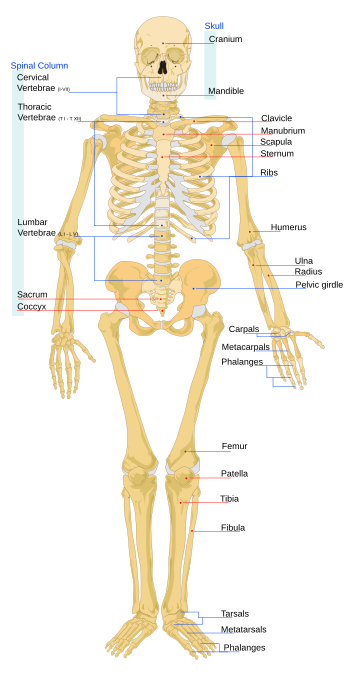THE MUSCULAR SYSTEM
-
composed of
muscle cell and tissues held tightly together
-
there are more
than 650 muscles in the body and more than 50 muscles in the face
PROPERTIES OF MUSCLE CELLS
- Contractility – the ability of the muscle to become shorter and thicker
- Extensibility – allows the muscles to stretch
- Elasticity – enables them to return to their original form
- Irritability - contraction of muscles stimulated by several stimuli like heat, light, chemical pressure and electricity
HOW DO MUSCLES WORK?
Muscles work by tightening
and loosening. Tightening is called contraction. Loosening is called relaxing.
Your nerves tell muscles when to contract.
Suppose you see a cookie
on a table. You want to pick up that cookie and eat it. Your brain sends out a
signal. Nerves carry the signal from your brain to your arm and hand muscles.
The signal tells muscles in your arm to contract. Your arm reaches out for the
cookie. Then the signal tells muscles in your hand to contract and grab the
cookie. Muscles in your arm contract to bring the cookie to your mouth. Your
hand pops the cookie into your mouth. Your jaw muscles contract and relax so
you can chew the cookie.
- Muscles in the body work in pairs as flexors (biceps) and extensors (triceps). One bends or lifts the other straightens and extends
- Biceps (flexors) – it pulls up or lifts the lower arm
- Triceps (extensor) – it extends the arm
WHAT ARE MUSCLES MADE OF?
Muscles are bundles of
thin strands called fibers. The muscle fibers are made of substances called
proteins.
There are two types of
muscle fibers. The two types are slow twitch and fast twitch. Your fast-twitch
muscle fibers contract rapidly. These fibers give you bursts of power. When you
suddenly jump or run fast while playing tag, your fast-twitch muscle fibers are
hard at work.
Slow-twitch muscle fibers
allow you to keep doing exercises. They give you endurance. When you run a long
way, your slow-twitch muscle fibers are doing most of the work. Some kinds of
muscle have both fast-twitch and slow-twitch fibers.

Functions of the Muscular System
- muscle hold the skeletons together, they are joined to the bones
- muscles cover and protect the bones of internal organs
- skeletal muscles enable us to move
- smooth muscles push the food through our digestive tract
- cardiac muscles make our heart beat
KINDS OF MUSCLES
- Skeletal muscles – attached to the bones and cause them to move
- also called striated muscles because they have
stripes or striations
- also called voluntary muscles
- These muscles contract and relax to make your bones
move. These are the kind of muscles you use to run or swim or reach for cookies
- This type of muscle is composed
of long fibers surrounded by a membranous sheath, the sarcolemma. The fibers
are elongated, sausage-shaped cells containing many nuclei and clearly display
longitudinal and cross striations
- Most skeletal muscle is attached to portions of the
skeleton by connective-tissue attachments called tendons.
- Contractions of skeletal muscle serve to move the
various bones and cartilages of the skeleton. Skeletal muscle forms most of the
underlying flesh of vertebrates.

- Cardiac muscle – are much shorter and do not tire easily and do not have striations
- This muscle tissue composes most of
the vertebrate heart. The cells, which show both longitudinal and imperfect
cross striations, differ from skeletal muscle primarily in having centrally
placed nuclei and in the branching and interconnecting of fibers.
- Cardiac muscle is not under voluntary control. It
is supplied with nerves from the autonomic nervous system, but autonomic
impulses merely speed or slow its action and are not responsible for the
continuous rhythmic contraction characteristic of living cardiac muscle.

- Smooth muscles – are composed of cells with single nucleus
- perform involuntary motions
- Visceral, or involuntary, muscle is
composed of spindle-shaped cells, each having a central nucleus. The cells have
no cross striations, although they do exhibit faint longitudinal striations.
- found in the skin, internal organs, reproductive
system, major blood vessels, and excretory system.

Type
|
Description
|
Function
|
Examples
|
Skeletal
|
- voluntary
- striated muscle
|
- moves bones
|
- arms and legs
|
Smooth
|
- involuntary
- non-striated muscle
-
|
- forms part of the wall of the digestive,
respiratory and circulatory system
|
- stomach and lungs
|
Cardiac
|
- involuntary
- striated muscle
|
- causes the heart to alternately contract and relax
|
- heart
|







